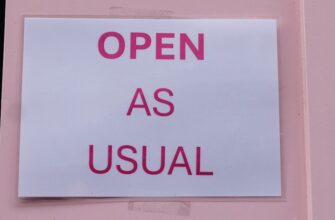- Understanding Cryptocurrency Rate Charts: The Trader’s Compass
- Why Cryptocurrency Rate Charts Matter for Investors
- Decoding Chart Components: A Visual Glossary
- 4 Essential Cryptocurrency Chart Types Explained
- Line Charts
- Bar Charts
- Candlestick Charts
- Heikin-Ashi Charts
- Top 5 Cryptocurrency Charting Platforms
- Trading Strategies Using Rate Charts
- Cryptocurrency Rate Chart FAQ
Understanding Cryptocurrency Rate Charts: The Trader’s Compass
Cryptocurrency rate charts are visual representations of digital asset price movements over time, serving as essential tools for investors navigating the volatile crypto markets. These dynamic graphs transform complex market data into actionable insights, allowing traders to spot trends, predict potential breakouts, and make informed decisions. With over 20,000 cryptocurrencies in existence, mastering chart analysis has become fundamental for anyone serious about crypto investing.
Why Cryptocurrency Rate Charts Matter for Investors
Real-time cryptocurrency rate charts provide critical advantages:
- Trend Identification: Spot bullish uptrends or bearish downtrends across minutes, hours, or years
- Volatility Measurement: Gauge price fluctuation intensity through candlestick wicks and bar ranges
- Support/Resistance Levels: Identify psychological price barriers where assets frequently rebound or stall
- Historical Context: Compare current prices to all-time highs or previous cycle patterns
- Market Sentiment Analysis: Interpret trading volume spikes as indicators of investor confidence
Decoding Chart Components: A Visual Glossary
Master these elements to read cryptocurrency rate charts like a pro:
- Timeframes: Toggle between intervals (1min to 1yr) – shorter frames reveal entry points, longer frames show macro trends
- Candlesticks: Green/white candles indicate price rises (close > open), red/black show declines
- Volume Bars: Height reflects trading activity – high volume confirms trend legitimacy
- Moving Averages: Smoothed lines (e.g., 50-day or 200-day) filter market noise to reveal momentum
- RSI Indicator: Measures overbought (>70) or oversold (<30) conditions on a 0-100 scale
4 Essential Cryptocurrency Chart Types Explained
Line Charts
Simplified plots connecting closing prices – ideal for clean long-term trend visualization.
Bar Charts
Vertical bars showing open, high, low, and close (OHLC) – perfect for volatility assessment.
Candlestick Charts
Market standard with colored bodies/wicks – reveals trader psychology through patterns like Doji stars or hammers.
Heikin-Ashi Charts
Smoothed candlesticks that filter minor fluctuations – reduces false signals during choppy markets.
Top 5 Cryptocurrency Charting Platforms
- TradingView: Professional-grade tools with social features – 30M+ users
- CoinMarketCap: Real-time charts + market cap rankings for 10,000+ coins
- CoinGecko: Community-driven charts with developer activity metrics
- Binance Charts: Integrated trading view with depth charts for spot/futures
- Glassnode: On-chain analytics overlays for institutional-grade insights
Trading Strategies Using Rate Charts
Combine these techniques with cryptocurrency rate charts:
- Breakout Trading: Enter when price breaches key resistance with high volume
- Support Bounces: Buy near historical support levels with RSI confirmation
- Moving Average Crossovers: Golden cross (50MA > 200MA) signals bull runs
- Divergence Plays: Price makes new highs while RSI declines? Prepare for reversals
Always set stop-losses at 2-5% below entry points to manage crypto’s inherent volatility.
Cryptocurrency Rate Chart FAQ
Q: How often do cryptocurrency rates update on charts?
A: Real-time charts refresh every 1-60 seconds across major platforms, while exchange-specific views update tick-by-tick.
Q: Can charts predict Bitcoin’s price accurately?
A: No chart guarantees predictions, but historical patterns (like halving cycles) combined with volume/RSI provide high-probability scenarios.
Q: Why do different exchanges show slightly different rates?
A: Variations occur due to liquidity differences, trading pairs, and regional demand – always check volume-weighted averages.
Q: How far back can I view historical cryptocurrency charts?
A: Major coins like BTC/ETH have data since 2010-2015, while newer altcoins may only show 1-2 years of history.
Q: Are free charting tools sufficient for serious trading?
A: Free versions work for beginners, but professionals often upgrade for advanced indicators, multiple timeframes, and custom alerts.








